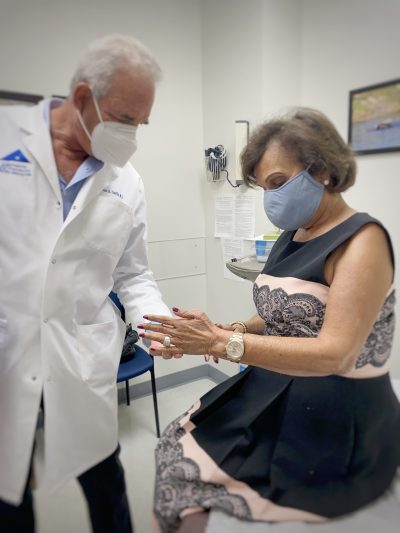Rheumatoid Arthritis

Over 43 million people throughout the United States of America alone suffer from one form of arthritis or another. I say one form of arthritis or another because, in fact, there are over one hundred different kinds of arthritis and the word “arthritis” itself simply means or reflects pain or swelling of a joint. In many situations, this painful or swollen joint is simply the tip of the iceberg and reflects inflammation or other imbalances that may be occurring within the body of the sufferer. Some of the more common arthritis or rheumatic diseases include rheumatoid arthritis, osteoarthritis, osteoporosis, gout, tendonitis, bursitis, fibrositis, lupus (SLE), and ankylosing spondylitis. Less common types include sarcoidosis, scleroderma, and dermatomyositis. In all these conditions the joints and musculoskeletal system may be affected, either very mildly or in a severe fashion where progressive pain and swelling can lead to deformity and joint crippling. It is extremely important if an individual has mild aches or pains that do not disappear spontaneously in a short period of time, that they see a physician with regards to their complaints as the sooner one can treat these problems, the more likely that a better outcome may occur.
The physician who is best suited to treat problems of the joints and musculoskeletal system is the Rheumatologist. Rheumatologists are physicians who specialize in treating people who have persistent aches and pains. Initially, a Rheumatologist is trained in Internal Medicine so he is very familiar with the various medical problems that may present with joint complaints. After specializing in Internal Medicine, the Rheumatologist spends two more years sub-specializing in pure rheumatic disease so that by the time he goes out into practice, he is able to recognize the causes of joint pain and diagnose and treat them appropriately. It is very important for the Rheumatologist to recognize that each patient is their own specific individual and that despite the fact that a diagnosis of rheumatoid arthritis may be the same from one patient to another, everyone presents in their own fashion and has their own specific and unique needs.
When we prescribe treatment, not only are we utilizing medications which will hopefully reduce the inflammation and control the symptoms, we are also very concerned with making sure that the patient’s lifestyle, activities of daily living, ability to function at home and at work are also taken into account. The treatment for an 80-year old inactive female would be very different from that of a 30-year old male, despite the fact that they both may have the diagnosis of rheumatoid arthritis. In addition to the medication and awareness of the patients’ needs, the utilization of a multidisciplinary approach in which the correct exercises, nutrition and understanding by the patient of his/her own limitations are very important for the overall well-being and positive outcome that is desired.
While it is true that there are some very serious diseases that are difficult to treat within the realms of rheumatic diseases, many other conditions do, in fact, respond very well to mild forms of treatment. Today we are using medications for the treatment of these conditions that previously were utilized only in desperate situations or in conditions that were considered far more serious. However, by using very low dosages and using them in a unique fashion, one is able to reduce the side effects significantly and can afford the patient tremendous relief from their symptoms.
One cannot emphasize enough that a multidisciplinary approach is needed to successfully treat most patients who are suffering from arthritis. The statement that “one just has to live with one’s pain” is totally ignorant and outdated. I think that as a Rheumatologist we run the gamut of two extremes. On the one hand, the frustration and anguish that we feel when we see a patient who comes in with advanced arthritis deformities due to the fact that he has received inadequate or inappropriate treatment is something that never ceases to bother us. We can only hope that in time, as people become more aware of the many things that we can do for their arthritis, that this situation will become the lesser of the two extremes. The other side of the coin is that we see many patients who come in with canes or walkers or with severe pain and disabilities who are able to walk out of our offices after a period of time or a course of treatment in much less pain and far more capable of dealing with their daily lives. This gives one a very positive feeling. In summary, there are many conditions that come under the heading “arthritis”. Most of these conditions are treatable and if someone is bothered by persistent musculoskeletal complaints, seeing a Rheumatologist should be considered mandatory.

